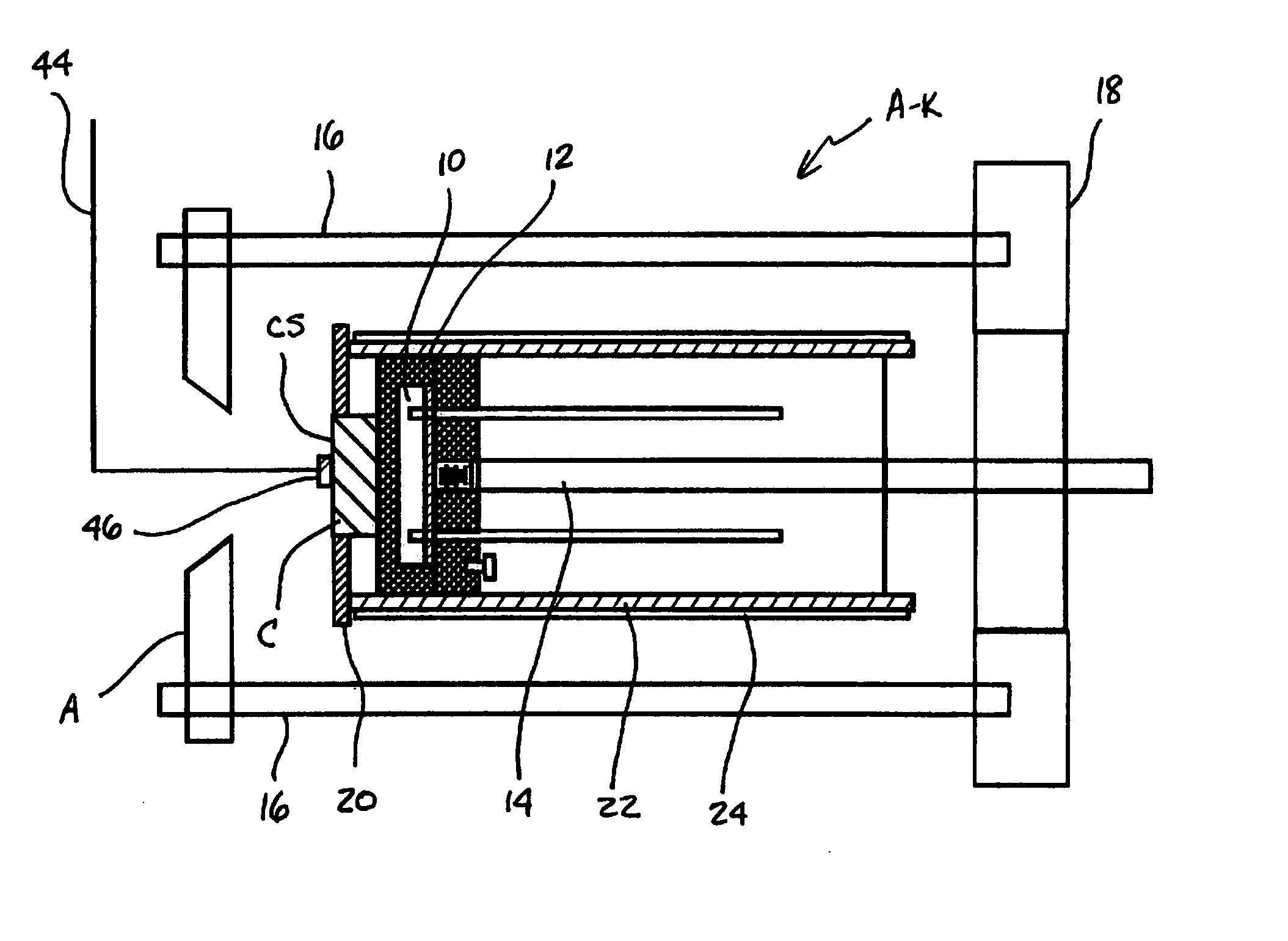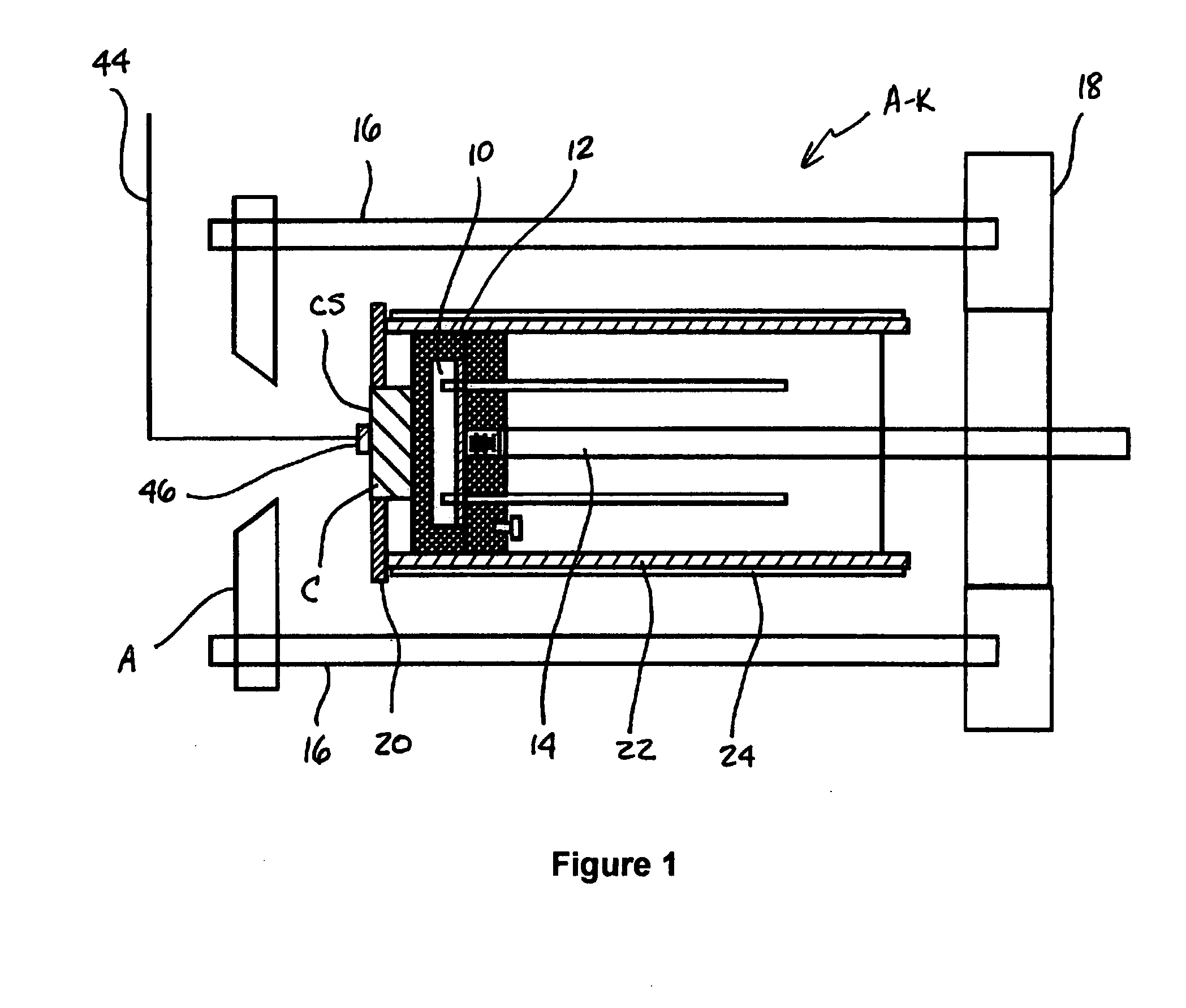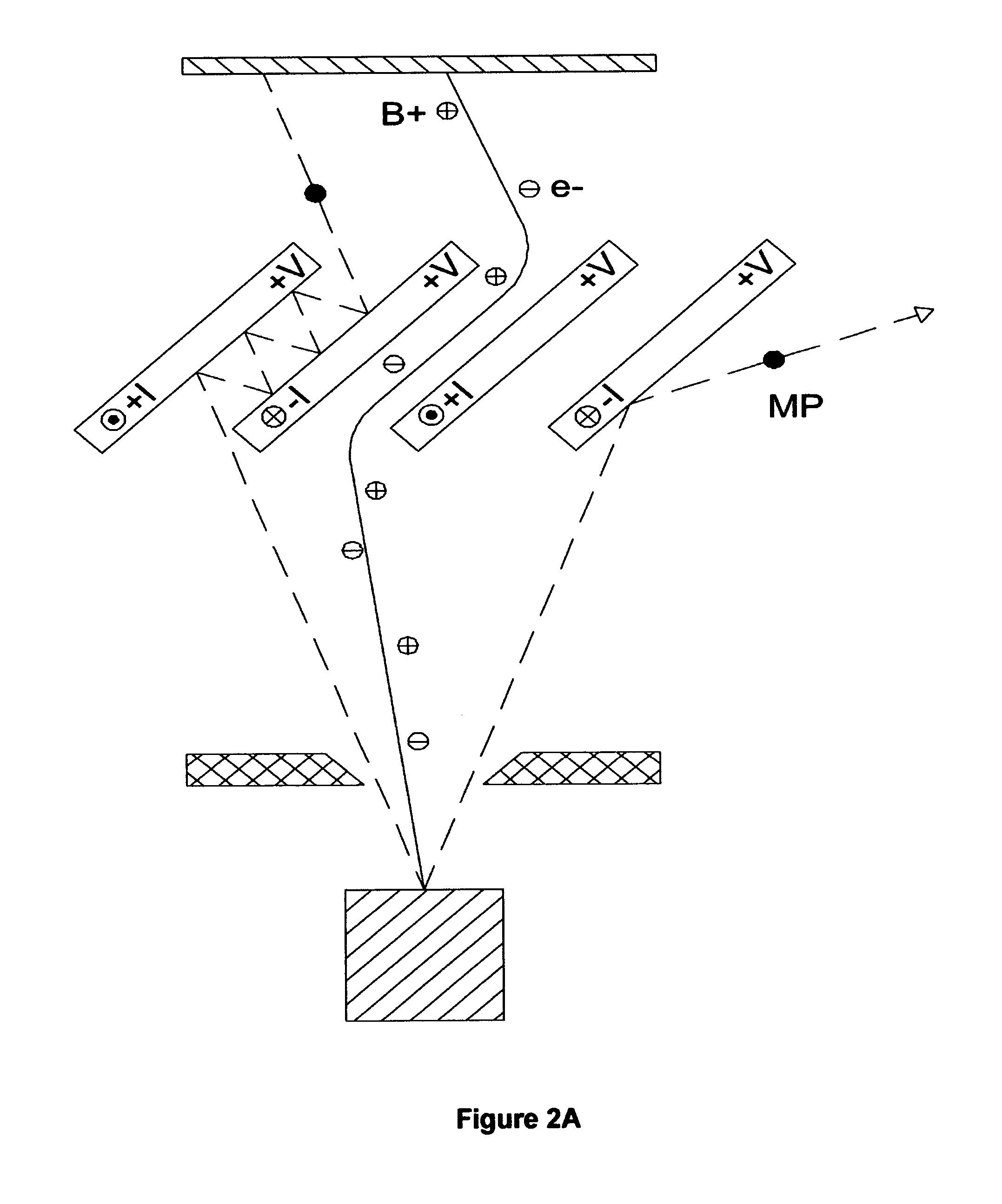Coated medical device and method of making
a medical device and coating technology, applied in the field of coating medical devices, can solve the problems of loosing of the respective joint components, failure of the system, septic failure, etc., and achieve the effects of improving surface polishing, improving wear properties, and improving wear properties
- Summary
- Abstract
- Description
- Claims
- Application Information
AI Technical Summary
Benefits of technology
Problems solved by technology
Method used
Image
Examples
example
[0056] Biocompatibility testing was separated into several components including: (1) characterizations of specimen surface microtopographics by optical and scanning electron microscopy; (2) alterations of surface microtopographics and solutions through exposure of disks within phosphate buffered saline (PBS); (3) post exposure disk surface microtopography and elemental chemistries of the solutions (PBS); (4) fibroblast cell culture assessments using an aliquot of solution (PBS) and contact inhibition exposure techniques; and (5) standardized injections of individual types of particulates and mixtures into synovial pouch regions of rats for assessments of cellular (histological) and matrix (cytokine) responses. In each situation, the base alloys of cobalt and titanium were used in bulk and particulate forms as controls (known biomaterials by ASTM FO4 standards). Also, in each situation, a “worst case” scenario was selected to test limits of the systems, e.g. rough as-machined surface...
PUM
| Property | Measurement | Unit |
|---|---|---|
| Fraction | aaaaa | aaaaa |
| Electrical resistance | aaaaa | aaaaa |
| Molecular weight | aaaaa | aaaaa |
Abstract
Description
Claims
Application Information
 Login to View More
Login to View More - R&D
- Intellectual Property
- Life Sciences
- Materials
- Tech Scout
- Unparalleled Data Quality
- Higher Quality Content
- 60% Fewer Hallucinations
Browse by: Latest US Patents, China's latest patents, Technical Efficacy Thesaurus, Application Domain, Technology Topic, Popular Technical Reports.
© 2025 PatSnap. All rights reserved.Legal|Privacy policy|Modern Slavery Act Transparency Statement|Sitemap|About US| Contact US: help@patsnap.com



